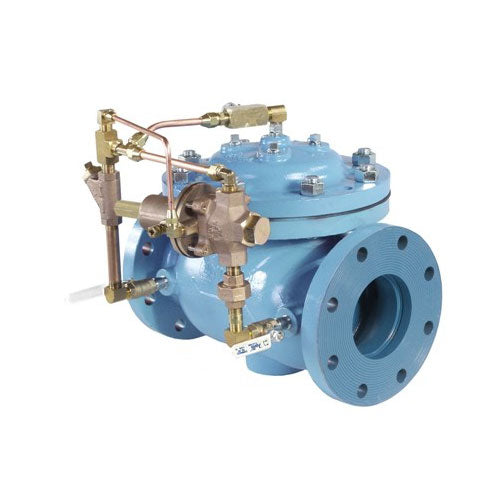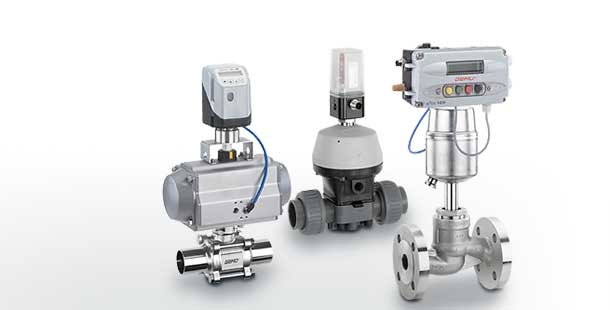
Maximize Energy Cost Savings and Comfort With Advanced Building Automation Controls
In the realm of modern-day style and center management, the assimilation of sophisticated building automation regulates stands as a pivotal development. The merging of modern technology and sustainability has birthed a new period where power efficiency, convenience optimization, and functional streamlining are no more possible truths but remote goals. By harnessing the power of automation, structures can adapt, react, and develop in manner ins which were when unimaginable. The possibility for considerable energy cost savings and enhanced convenience is not just an opportunity however a promise waiting to be fulfilled. This standard change in building management holds the key to unlocking a globe where environmental conscientiousness and resident health sympathetically coexist within the wall surfaces of our frameworks.
Power Effectiveness Conveniences
Power effectiveness benefits can substantially lower energy usage and functional prices in structures. Energy-efficient systems, such as innovative structure automation controls, can optimize the use of resources like air conditioning, lights, and heating, leading to reduced power expenditures over time.
In addition, enhanced power efficiency can extend the lifespan of structure devices and systems. By running a lot more effectively, HVAC systems, lighting fixture, and various other building parts experience less deterioration, causing lowered upkeep and substitute prices. In addition, energy-efficient structures typically command higher property values and rental rates, providing lasting economic advantages to owners.
Moreover, power efficiency can enhance passenger convenience and efficiency. Correctly controlled indoor settings with optimum illumination and thermal conditions develop an even more favorable and pleasurable office, leading to enhanced worker fulfillment and efficiency. In general, the energy efficiency advantages connected with advanced structure automation controls are diverse, including price savings, ecological stewardship, and resident well-being.
Improved Convenience Control
Enhancing convenience control in structure atmospheres needs an innovative combination of advanced automation systems for optimal owner wellness. By using sophisticated building automation controls, centers can tailor the indoor atmosphere to meet the details requirements and choices of occupants. control valves.
Boosted comfort control surpasses basic temperature level changes. It includes features such as personalized setups, occupancy sensing units, and all-natural light usage to develop a vibrant and responsive setting. By integrating these advanced controls, structures can not only enhance convenience but additionally enhance power efficiency by optimizing system procedures based upon actual tenancy and usage patterns. Inevitably, prioritizing owner comfort with sophisticated automation systems causes a more delightful and healthier interior atmosphere.
Operational Efficiency Improvements

Furthermore, the execution of real-time monitoring and analytics tools allows building drivers to identify energy inadequacies and functional anomalies promptly. By continually keeping track of power usage patterns and system performance metrics, modifications can be made in real-time to maximize energy usage and make certain click now peak operational efficiency. control valves. In addition, including need response techniques into structure automation controls can even more boost functional performance by dynamically adjusting energy usage based on grid conditions and pricing signals
Indoor Environment Optimization
Effective interior climate optimization is a basic element of building automation controls, guaranteeing passengers' comfort and health while taking full advantage of power cost savings. By making use of sophisticated sensing units and controls, constructing automation systems can continuously keep track of and readjust temperature, moisture levels, air high quality, and air flow to develop an ideal indoor setting. Preserving comfy and consistent conditions not only enhances occupant complete satisfaction however likewise increases efficiency and overall health.
Interior climate optimization also plays an important role in power efficiency. By fine-tuning air flow, home heating, and air conditioning systems based on real-time data and occupancy patterns, building automation controls can considerably lower energy consumption - control valves. Implementing strategies such as demand-controlled air flow and thermal zoning can assist decrease energy waste while making certain that each area of the building obtains the required conditioning.

Sustainable Environment Production
Structure automation manages not only optimize interior environment conditions for energy efficiency and resident comfort but also lay the structure for producing a sustainable environment through tactical management of sources and systems. By integrating innovative building automation innovations, such as sensors, actuators, and smart software, centers you can look here can readjust and keep an eye on energy use in real-time to lessen waste and reduce their carbon impact. These systems allow predictive maintenance, identifying possible issues prior to they escalate and maximizing equipment efficiency to enhance long life and efficiency.
Furthermore, sustainable setting creation prolongs past energy administration to encompass water preservation, waste reduction, and indoor air top quality improvement. Structure automation controls can control water usage, identify leaks, and make certain proper garbage disposal methods, contributing to general sustainability initiatives. Additionally, by monitoring and managing ventilation and purification systems, these technologies improve passenger wellness and performance while reducing power consumption connected with cooling and heating operations.
Verdict
To conclude, advanced building automation manages deal substantial benefits in terms of power savings, comfort control, operational effectiveness, interior environment optimization, and creating a lasting setting. By implementing these controls, buildings can accomplish ideal efficiency while minimizing power consumption and improving resident comfort. It appears that making use of advanced automation modern technology is important in boosting building performance and developing an extra sustainable future.
Energy efficiency benefits can dramatically decrease energy consumption and operational prices in structures. Overall, the energy efficiency benefits linked with innovative structure automation controls are complex, incorporating cost financial savings, environmental stewardship, and occupant health.
Additionally, including demand reaction strategies into building automation controls can better improve operational performance by dynamically changing energy use based on grid problems and rates signals.
Building automation controls not just enhance interior climate problems for energy efficiency and occupant convenience but additionally lay the foundation for developing a sustainable environment via calculated management of sources and systems.In conclusion, progressed building automation regulates offer considerable benefits in terms of energy savings, comfort control, functional effectiveness, interior climate optimization, and producing a sustainable setting.